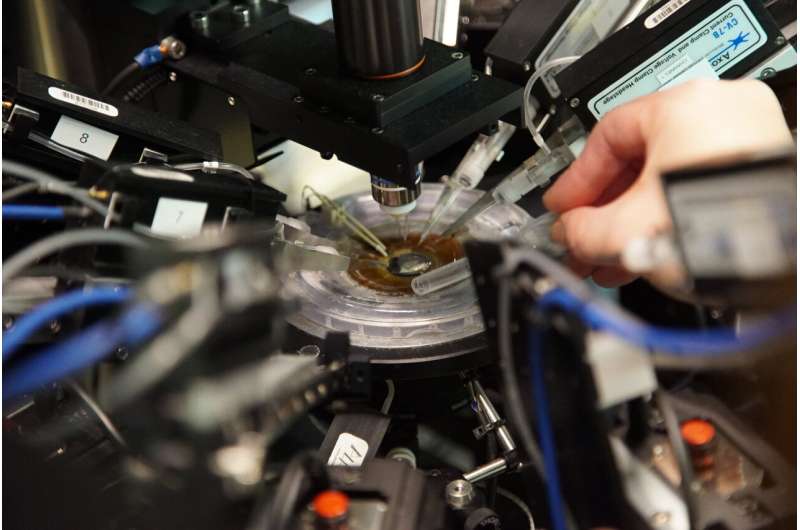This article has been reviewed according to Science X's editorial process and policies. Editors have highlighted the following attributes while ensuring the content's credibility:
fact-checked
peer-reviewed publication
trusted source
proofread
New study reveals neuron-specific responses to electric stimulation

New research by scientists at the Allen Institute's Brain and Consciousness group and Cedars-Sinai offers an unprecedented look at how neurons respond to electric stimulation (ES). Far from being uniform, different types of neurons showed distinct patterns of 'syncing up' with electrical fields. These patterns varied depending on the rate at which the ES was delivered.
The findings, published in Neuron, could help doctors fine tune where, when, and how to apply ES to the brain, said Soo Yeun Lee, Ph.D., the paper's first author and a Senior Scientist at the Allen Institute.
"With this study, we now have a much better idea of what types of stimulation work for specific cell classes," she said. "We can use that knowledge to develop more efficient ways of using electrical stimulation to treat disorders."
Using tissue samples from mice and humans, the research team delivered oscillating waves of ES within tens of micrometers of individual neurons. This extraordinary precision enabled an unprecedented look at electrical stimulation's impact at a single-cell level. They observed strong, cell-class-specific responses. Excitatory neurons synchronized firing with both slow and fast stimulation frequencies, while inhibitory neurons primarily responded to fast frequencies.
These class-specific responses are significant, Lee said, because they reveal that adjusting the stimulation frequency allows for the selective targeting of different neurons. That discovery could lead to more precise therapies to modulate neural activity.
For example, inhibitory neurons that express a protein called parvalbumin are implicated in epilepsy and in cognitive dysfunctions, she noted. This study shows that these cell classes are most responsive to certain frequencies. Future treatments could tailor ES to the most effective frequency, potentially improving outcomes and limiting side effects.
Beyond its clinical implications, the study also revealed a universal truth about how neurons function, Lee added. Regardless of cell class, cortical areas, or species, neurons exhibit a remarkable ability to synchronize with an external electric field.
This general property is superimposed on the brain's dazzling cellular diversity, Lee said—and the newfound understanding of these underlying mechanisms could transform our approach to treating complex brain disorders.
More information: Soo Yeun Lee et al, Cell class-specific electric field entrainment of neural activity, Neuron (2024). DOI: 10.1016/j.neuron.2024.05.009. www.cell.com/neuron/fulltext/S0896-6273(24)00356-8



















